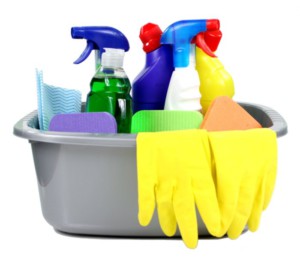
5S is one of the basic methods in lean manufacturing, used to create and maintain a clean and organized work environment. As far as lean methods go, it looks pretty easy. After all, everybody has cleaned something at least once. Unfortunately, cleaning it once is not enough. The challenge is to keep it clean! And this is where most 5S activities fail. In this post I want to describe the basics of 5S and how it works (plus also 4S, 6S, and even more S’s). In my next post I want to point out the hidden dangers of failure, and give some advice on how to make 5S stick.
Why 5S?
The advantage of 5S is that a cleaner workplace is easier to work in and hence more productive. Having the right tools in good order reduces scrap and rework as well as accidents. Easy access to the tools in a standard location makes their use faster, and hence overall productivity will increase. There may be also less space needed, and the number of required tools can go down. The time for a new worker to familiarize himself with the workplace may be reduced. Furthermore, while cleaning the machines or workplaces, the workers may notice and fix some minor issues that they may otherwise have missed. Overall, it can have quite some benefits.
However, the above advantages do not always materialize, either because the 5S is done incorrectly, or it is used in an area ill-suited for 5S (more in my next post), or the effort exceeds the benefits. In any case, it is often useful, but not always and everywhere.
The Method
Below I will show you the basics of the method, giving the Japanese 5S and common English translations of the 5S with some explanations. The method sounds easy enough, but especially the last two S’s are where projects fail. Please also note that the method is, in the West, often seen as a step-by-step approach. In Japan, however, these steps are a) different and b) do overlap. But more on that farther below.
1: Seiri – Sort
Seiri (整理): sorting; arrangement; organization; putting in order; adjustment; regulation; tidiness,
In the first step, all unnecessary items are sorted out and removed. This includes tools, parts, instructions, and any other items that are not needed. You would have to go through the area and decide for every item if it is necessary for the work. If it is not necessary, then it is a disturbance that is in the way and that has to be removed.
Sometimes a red tag is used to label all items that are not necessary. In a second step, all items tagged are removed and collected for other use, refurbishing, recycling, or throwing out. Another option would be to tag all items, and the workers remove a tag whenever they use an item. All items that have still tags after a certain period of time are removed or discarded.
2: Seiton – Systematic Arrangement, Set in Order
Seiton (整頓): orderliness; put in order; tidying up; arranging neatly
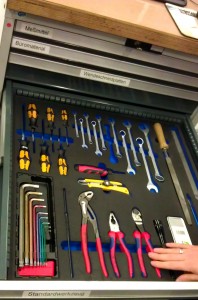
Create a systematic arrangement for the items that you want to keep at the workplace. Each tool and all parts should have a defined place. If space is tight, the more frequently used tools should be closer to the point of use, with less frequently used tools should further away. Ideally, whenever a person needs a tool, it should be in exactly the same spot every time.
This arrangement is often also supported by markings or storage design. The image on the left shows a drawer where each tool has its assigned place. You see immediately which tool goes where and which tool is missing.

A similar approach is also a shadow board, where each tool has a shadow or outline. Hence the location for each tool is easily marked, and missing tools are also quickly identified. The image shows a knives drawer in the Alcatraz prison. A missing knife can quickly be identified, as the wardens are very keen to know if the prisoners have knives or not.
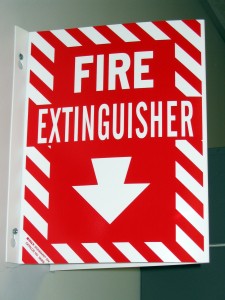
Another option is to mark the floors for places where items or material goes. Some of this is even regulated by laws. For example, the locations of fire extinguishers and first aid equipment are required to have certain markings and labels in standardized colors. Similar to other tools, this helps to find them quickly when you need them – and in case of fire, I would like to find the extinguisher quickly! Similar labels and markings can also be done for other parts and tools to make sure they all have their assigned place.

Additionally, all of the above can also be labeled with text to not only mark the place, but to also describe what goes in there or even how. Overall, in many modern factories there is a multitude of floor markings and other systematic positioning. However, a word of advice, this is also the part where over-enthusiastic 5S managers also often go overboard and plaster the place with labels – which then are quickly ignored by the workers.
This process usually also involves fixing broken items or painting, although this is also sometimes included in the next #3 – Seiso.
3: Seiso – Shine, Sweep, Sanitize, Scrub
Seiso (清掃, also sometimes written Seisou): cleaning
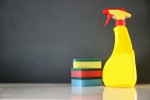
Now that you have removed all unneeded items (1: Seiri – Sort) and arranged the necessary stuff properly (2: Seiton – Systematic Arrangement), the next step is to clean the workplace and all items on it. Depending on which 5S version you read, this may be interpreted as shine, sweep, sanitize, or scrub.
As the name says, you clean the place. If you haven’t done it yet in step 1 or 2, you should also replace or fix everything that is broken or damaged. Additionally, cleaning also can include maintenance on machines.
Doing cleaning once is not a problem. Even my apartment has been clean, once, too. The challenge is to keep it clean! This is where the next step comes in:
4: Seiketsu – Standardize
Seiketsu (清潔): clean; hygenic; sanitary; pure; virtuous; immaculate
While Seiketsu is in English often phrased as “standardize,” this is a gross mistranslation. Hence, the use of this S is slightly different in Japan, where it stands for keeping it clean.
Sometimes in the English version it is said that here you should create a standard to keep it clean. In my view this is flawed. The first three S’s are the standard. With #4 you now have to keep the standard. If you need a standard to keep a standard then something is wrong. In any case, with #4 you should make sure that your sorted (1: Seiri – Sort), arranged (2: Seiton – Systematic Arrangement), and cleaned (3: Seiso – Shine) workplace should stay that way.
5: Shitsuke – Sustain, Self Discipline
Shitsuke (躾, usually written しつけ): discipline; training; teaching manners

Finally, there is Shitsuke, where you need the discipline to keep everything clean and orderly. Unfortunately, workplaces – of any place for that matter – have the tendency to become messy if they are not taken care of. Hence, to keep it clean a constant effort is needed.
However, in my view, this #5 overlaps with #4 – standardize. In any case, in combination #4 and #5, this is probably the hardest part of the 5S.
Is That All?
Too Much. Can I Have Only 4S?
Sure. When Toyota started using this method, they had only 4S as shown below, with the English interpretation by Toyota:
- Seiri – Sort
- Seiton – Oder
- Seiketsu – Neatness
- Seiso – Cleanliness
You quickly notice that Shitsuke (self-discipline) is missing, and that the order of Seiketsu (standardize) and Seiso (shine) are switched. Also, the translation given by Toyota is different from the English 5S used above. Finally, in case you missed it in the definitions above, in Japanese the words 1: Seiri and 2: Seiton have identical meanings.
An acronym for this was also RICK, for Remove, Identify, Clean, and Keep clean. At Toyota, the self-discipline is part of their culture, and they have no need for a 5th S. As for the switch of Seiketsu and Seiso, either way works, especially if you use the original Japanese meaning. Overall, in Japan this is usually not used as a step-by-step approach, but more as a nifty mnemonic. In my view, even the first 3S are enough as long as you do them regularly.
Too Little. Can I Have One More?
Sure, here you go:
Shukan (習慣): custom; habit; manners
This is a possible sixth S that is sometimes found in a version for 6S. You could also call Shukan “Style“, which is the closest word I found in English starting with a “S”. The idea is to get into the habit of doing the other 5S. I am not quite sure where that S came from. To me it looks redundant with #4 Seiketsu (standardize) and #5 Shitsuke (self-discipline). Hence, if a project cant sustain its 5S using #4 and #5, an identical #6 won’t really help. In any case, it is rarely used.
Can I Have Even More, Please?
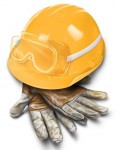
No Problem. Sometimes there is also an S standing for “Safety.” The idea is to check also for potential safety problems. This is a Western addition, as I am not aware of a Japanese word used in this context, especially not one that starts with S. However, if you insist you could use the Japanese version of the English word safety: セーフティー. Also, please note that this is not a 7S, but usually used as a different sixth S of the 6S version.
More! More! Give Me More!
All right, all right. Sometimes “Security” is also used as an additional S. The idea here is to see and understand risks to machines and other property. This even includes intellectual property and confidential information.
Again, I am unaware of this used in Japan, although here, too, you could use the Japanese version of the English word: セキュリティ.
4S, 5S, 6S, 7S, 8S – I Am Confused. Which One Should I Use?
Quite frankly, it does not matter! It makes no difference if you have 4, 5, 6, 7, or even 8S. These S’s are only a mnemonic to help you get your stuff in order and keep it that way. These are not a step-by-step approach, but more of a reminder. For example, when as a kid your mom asked you to make your room neat and tidy, she did not want you to first do step 1 and make the room neat, and then do step 2 and make the room also tidy. Same goes for clean and sparkling or polished and refined.
However, it of course does make sense first to throw out stuff (#1) before you clean and organize the rest rather than throwing out items after cleaning. As for the other S’s, the order is much less important. In any case, if you can’t get 4S working, more S’s won’t help either. When explaining the method, I usually go for 5S, since it is the most commonly known version in the Western world and most easily accepted. However, the impact will be the same from the first 3S upward.
On the other hand, if the client is mightily impressed by a consultant that has more S’s (after all, more is better, right?), I seriously doubt the abilities of both the client and the consultant – although the latter will be more profitable. I am no friend of buzzwords and other *bling*bling*. Additionally, I usually observe an inverse relation between the use of buzzwords and the performance on the shop floor. The more buzzwords, the worse the factory! Unless, of course, you find a consultant that knows 9S. They must be really, really good and you should hire them… Or maybe not. In any case, this brings me to my next post on why 5S fails and how to make it stick. In the meantime, go out and organize your industry!

1 thought on “How 5S Works”